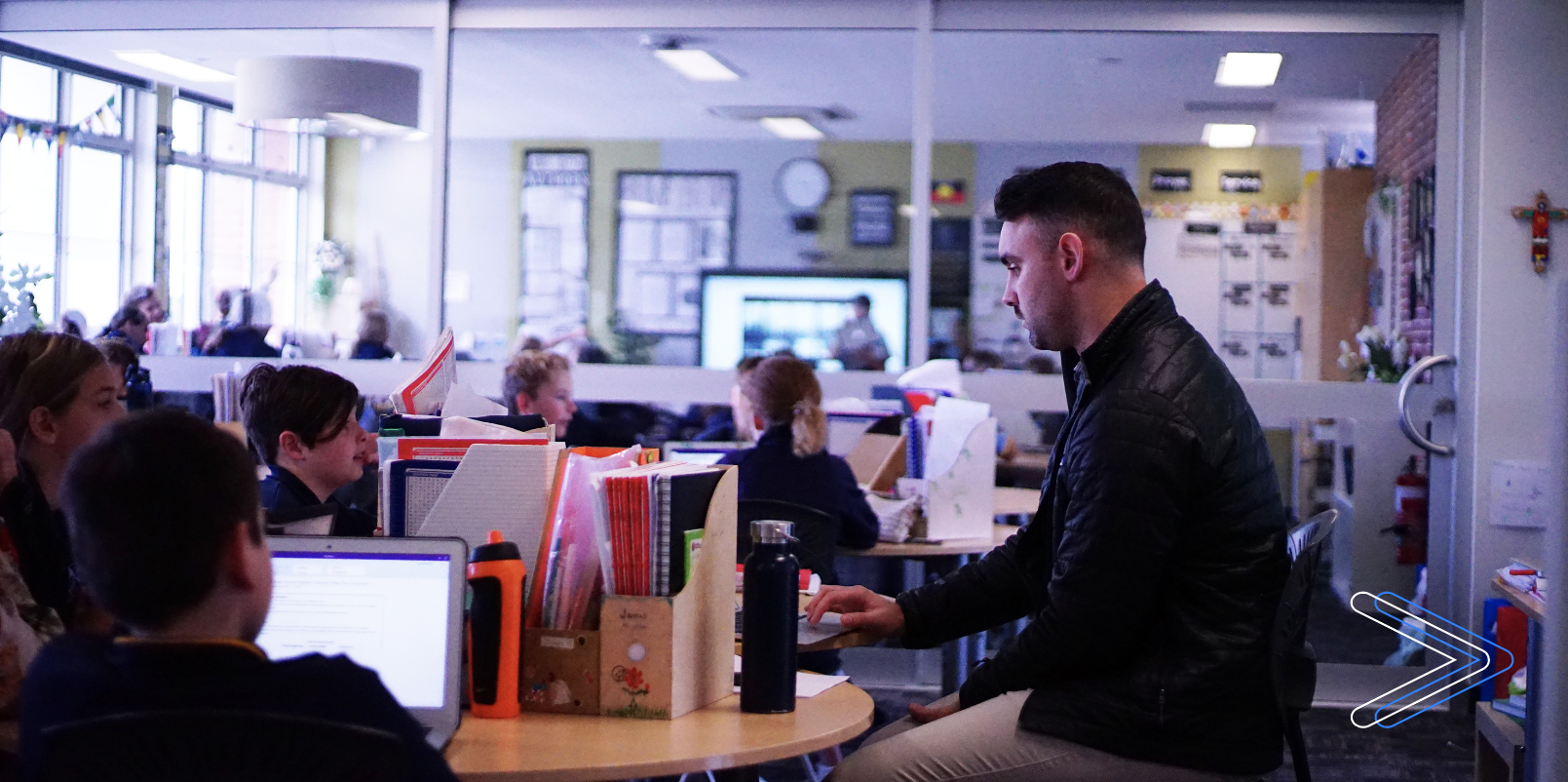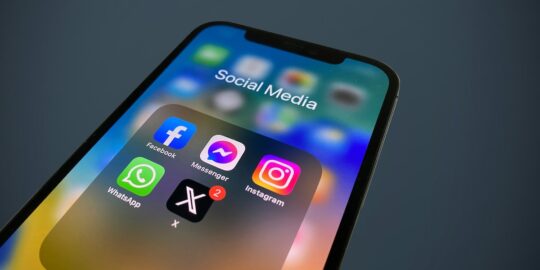
Before March 2020, some people thought of technology only as an optional tool to experiment in pedagogy, reach Gen Z students, and democratize the classroom. A few opined that the benefits of using technology in the classroom were a myth, believing that such deployment promoted cheating. Many, in contrast, saw the technology train chugging slowly along and were happily integrating some of it into their classrooms, but they weren’t prepared for what would happen after Covid arrived on the scene.
In came the pandemic: disrupting the educational system and forcing classrooms to swap face-to-face training for distance learning. That necessitated rapid tech integration in education, with 79% of teachers leveraging tech in nearly every lesson in 2020. This resulted in the speedy development of technologies designed to engage students, whether inside or outside the classroom.
The emerging technologies will likely remain an essential part of learning environments, even post-pandemic, because today’s students are digital natives. Plus, the benefits of using technology in the classroom – the sole focus of this post – are too great to ignore.
What are the benefits of using technology in the classroom, and what kinds of new technology can be integrated seamlessly with older technologies to upgrade and improves student learning without a complete overhaul? Keep reading.
Benefits of Using Technology in the Classroom: What Does “Using Technology in the Classroom” Mean?
Technology is anything created or developed to solve a problem and ultimately make life easier. Classroom technology encompasses tech systems and solutions deployed within a classroom to enhance learning.
Integrating technology in education programs does run the risk of distracting students; but, if harnessed correctly, it can greatly improve student engagement and learning effectiveness – among other benefits.
Related: 7 Tips for Choosing the Right EdTech Platform
Top 5 Benefits of Using Technology in theClassroom
Digitally enhanced classrooms make education accessible to all, regardless of their location, time zone, or subject mastery. Here are some benefits of using technology in the classroom.
1. Student Engagement and Immersive Learning
Gone are the days when keeping students engaged required old-fashioned tricks up a teacher’s sleeve.
Today, teachers can leverage digital tools to present topics in more interactive ways. Even those quiet students who would shy away from answering questions in class can find a way to engage when technology enters the equation.
Technology can even take an already interactive lesson a notch higher to create immersive experiences – through colorful visuals, engaging stories, and on-the-fly discussions and examples. Virtual field trips are another immersive tech strategy for helping students absorb information, as they allow students to visit different educational sites from the comfort of their home or classroom.
Teachers can also leverage 3D printing to create fun yet content-rich lessons. Think of having students print objects they have designed and built using 3D modeling software.
The options for digital engagement systems are becoming limitless, and the resulting benefits of using technology in the classroom obvious.
Simple online quizzes, for instance, can help teachers gauge how familiar students are with a topic while offering immediate grading. The results can inform and direct what to focus on in the course, either immediately or later on. If the quizzing is done after a lesson, teachers can identify what’s deemed complex by their students and devise ways to further reinforce what was learned.
Such engagement systems can keep students motivated and drawn to lessons, forging a genuinely enjoyable experience. That can, in turn, improve the quality of the learning experience and enhance information retention.
2. Gamification
Technology makes it easy to incorporate games or game-like scenarios into lesson plans to boost productivity and enjoyment. These scenarios also develop a sense of healthy competition and achievement among students, consequently positively impacting their learning, engagement, and memory retention.
It’s no wonder TEDx Talks such as The Power of Gamification in Education and How Games Make Kids Smarter advocate the use of games to excite, engage, and motivate learners — a call that’s heeded by most teachers given the meteoric rise of gamification in education. Consequently, this has also led to a surge in the development of online learning games.
Quizlet, for example, enables teachers to create self-made quizzes, digital flashcards, and online study tools. Enuma, on its end, gamifies mathematics instructions and rewards students with “cyber stars” for mastering vital concepts. In Role Play, students pose arguments or questions on behalf of famous historical figures. The list is endless.
3. Personalized Learning Experiences
Each student has a different learning style and preferred method to acquire knowledge for short and long-term memory retention.
That means there’s no one-size-fits-all way of teaching. And teachers must differentiate their instructions to make lessons relevant to each student – regardless of their educational background, language, or learning ability.
In other words: a teacher illustrating a comparison of the COVID-19 impact between two states is better off presenting the information using a variety of platforms, like a PowerPoint Presentation, Microsoft Excel sheet, and Video.
Fortunately, many tech tools are available to enhance and streamline differentiated learning experiences.
Take a learning management system as an example. Teachers can log in to monitor a learner’s progress, send reminders to complete specific tasks, and overall work to keep the student on track. They can also use the platform to customize lessons and learning environments to minimize distractions.
Better still, such systems can log progress and serve as digital databases for storing details about student grades and habits. From here, teachers can draw and leverage insights to customize lessons to suit the needs and preferences of individual students.
Students, on their end, can leverage such systems to pace their learning process, review deemed complex concepts, or skip ahead as they see fit. This can prove particularly helpful for differently-abled or struggling students.
Related: The Role of Technology in Personalized Learning
4. Increased Access to Information
Gone are the days when teachers would distribute notes aged ten years or more–or rely on limited textbooks to cover the curriculum. Today, there’s vastly increased access to information. Learners can explore resources on specific topics and attend class prepared.
Students can also search educational databases and sites to learn about a topic that piques their interest, or gain access to academic papers and articles that complement or clarify confusing lessons.
Beyond class materials, students can self-learn non-curricular activities for that all-around-student experience. Think arts, music, and virtually anything else. (After all, most creative endeavors are supported by technology.) For example, learners can use tablets to capture their sketches and editing software to manipulate the same in creative ways, bringing the photos to life.
Overall, the increased access to information ensures that teachers don’t run out of information to issue students. It ensures that learners are empowered to find relevant information themselves in a wide variety of media formats like podcasts, videos, and scientific journals.
Additionally, such independent learning can help students identify their preferred information delivery mode. It could be forums, videos, podcasts, websites, or something else, but the student can explore and engage with the media that fits their learning style.
5. Screen Sharing and Collaboration
Some screen mirroring technologies lets teachers and students display content from their internet-enabled devices to a main classroom display, wirelessly, increasing the community vibe of the classroom.
In other words, screen mirroring enables students and teachers to quickly share, discuss, and offer feedback on a task from any device. Using this technology, users can easily share their own work–lessons, notes, projects, and ideas–regardless of their location in the classroom, and talk about it with their peers.
Teachers can also leverage screen mirroring technology in every day lessons by using it to play media – videos, music, games, or even polls —while walking around the room giving students individualized attention. Overall, this helps illustrate points, promote a longer attention plan, increase classroom participation, and boost a student’s motivation to learn.
Screen mirroring technology additionally allows the teacher to display a student’s actual assignment from his or her own screen. Teachers can showcase a student’s solution to a specific task and start a discussion around it, helping the entire class understand the task in a more in-depth way.
When the work of multiple students is discussed, the class can see the different approaches used by their peers in the moment, and understand the entire lesson from a variety of perspectives.
With the ability to share multiple student devices to a main display at once, the teacher can easily compare the approach of individual students towards solving a problem–all while maintaining control over screen sharing.
Not only can both teacher and student share materials to the screen to further discuss and understand a lesson, but a teacher can also use screen mirroring technology to encourage students to collaborate among themselves, as well.
That could include researching a topic together and presenting their findings as a class or in smaller groups. As the teacher walks around monitoring group progress, he or she can easily evaluate when to share a group’s screen to the main display. Knowing that this is coming, students are more motivated to stay on task and invest in their work.
How the Benefits of Using Technology in the Classroom Continue Outside the Classroom
Getting students accustomed to learning and working with digital technology equips them with the skills and knowledge needed to succeed outside the classroom. This includes skills such as:
- Troubleshooting
- Collaborating in digital spaces
- Managing digital resources
- Communicating effectively using technology
- Navigating unfamiliar or new technologies independently
- Using digital tools for independent learning
- Cyber security
The idea is to help students become well versed in technology to improve their opportunities later. That’s particularly vital as learners enter a world where nearly all industries are technologically advanced. Office jobs no longer require paperwork but do nearly everything digitally. Technology is a common theme in most, if not all, everyday tasks, from high-level engineering work to booking a vet appointment.
As time goes on, recent graduates will likely get into roles that have radically changed in the last two years, while current learners will head into careers that haven’t even been invented yet.
In fact, it’s safe to conclude that the only certainty in the future of work is more complexity and greater use of technology. And this won’t be confined to STEM-based careers but will expand to non-tech professions, as the world embraces technology to bypass physical boundaries, boost collaboration, and drive creativity.
This means that fluency in technology will no longer be an add-on bonus but an expectation in the work environment. For school systems, this is one of the most important reasons to give students an edge by investing in digitally enhanced classrooms to boost their technological capabilities.
It’s clear that the advantages of using technology in the classroom are limitless. It can make lessons more dynamic, encourage collaboration, promote self-directed learning, and support differentiated instruction.
Tap Into the Benefits of Using Technology in the Classroom
Vivi is a wireless screen mirroring solution specifically designed for the education sector. It works with any device, media type, display, number of users or classrooms, and learning styles. Vivi’s screen mirroring product is technologically agnostic. Teachers can present any media – be it YouTube video or school app – to the classroom display from their own device, wirelessly connected to the physical, in-class Vivi box.
Unlike HDMI cables that keep teachers tethered to their devices, Vivi works wirelessly. So the teacher can roam and engage with the display and the students from anywhere, while also having the ability to invite students to share from their own respective devices.
Vivi is a plug-and-play tech solution. And you can manage the platform from one central location. Just from the dashboard, you can see how much teachers are using it, turn off every screen in a single click or show an emergency notification to hundreds of classroom screens at once. Book a demo today to help enrich your school’s district classrooms through technology.



